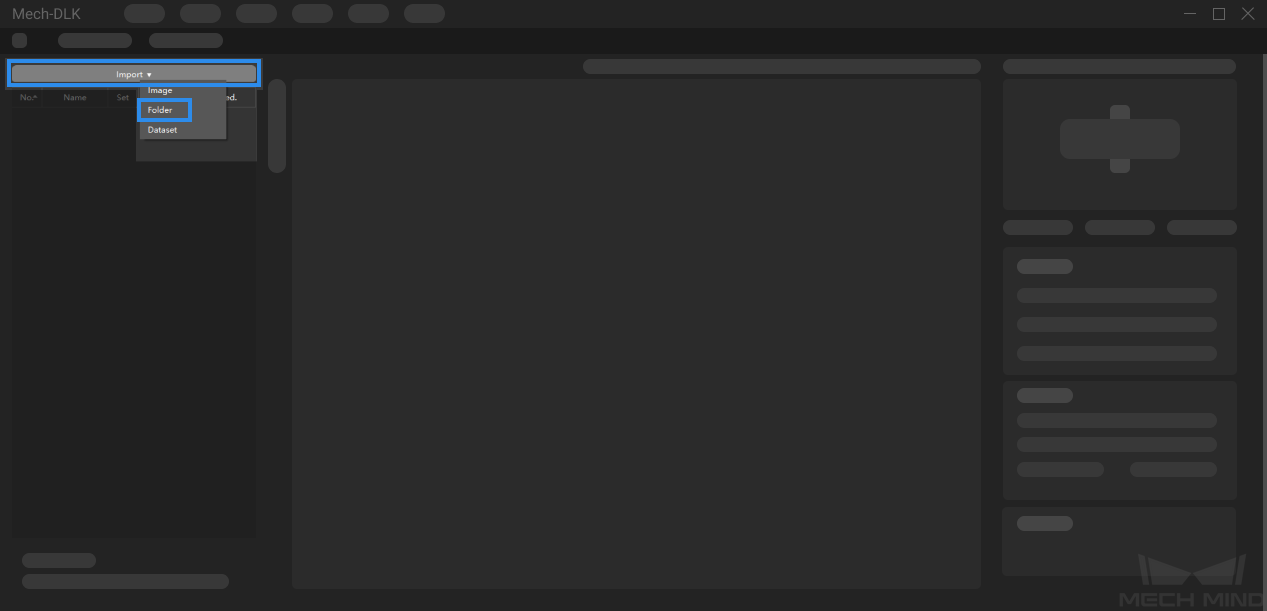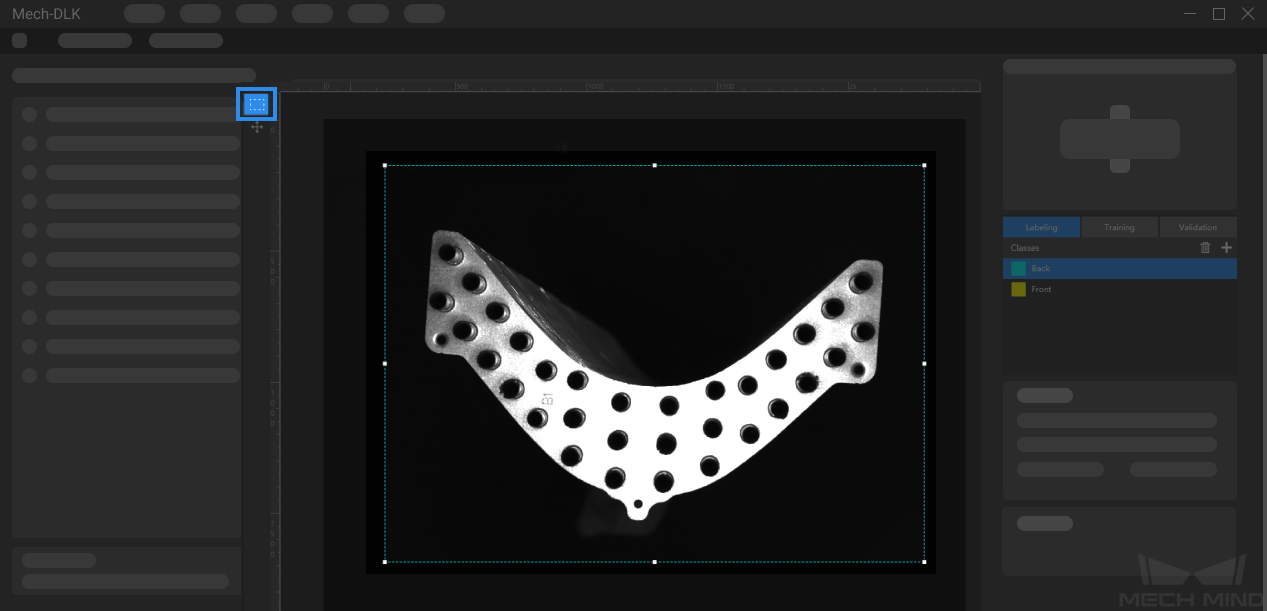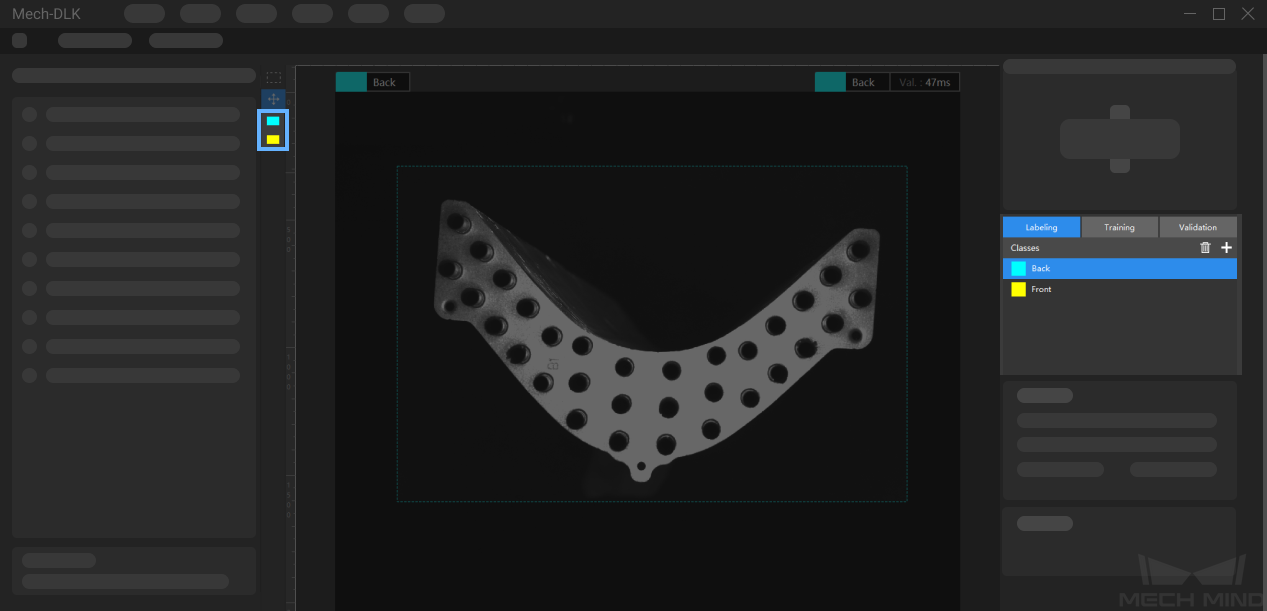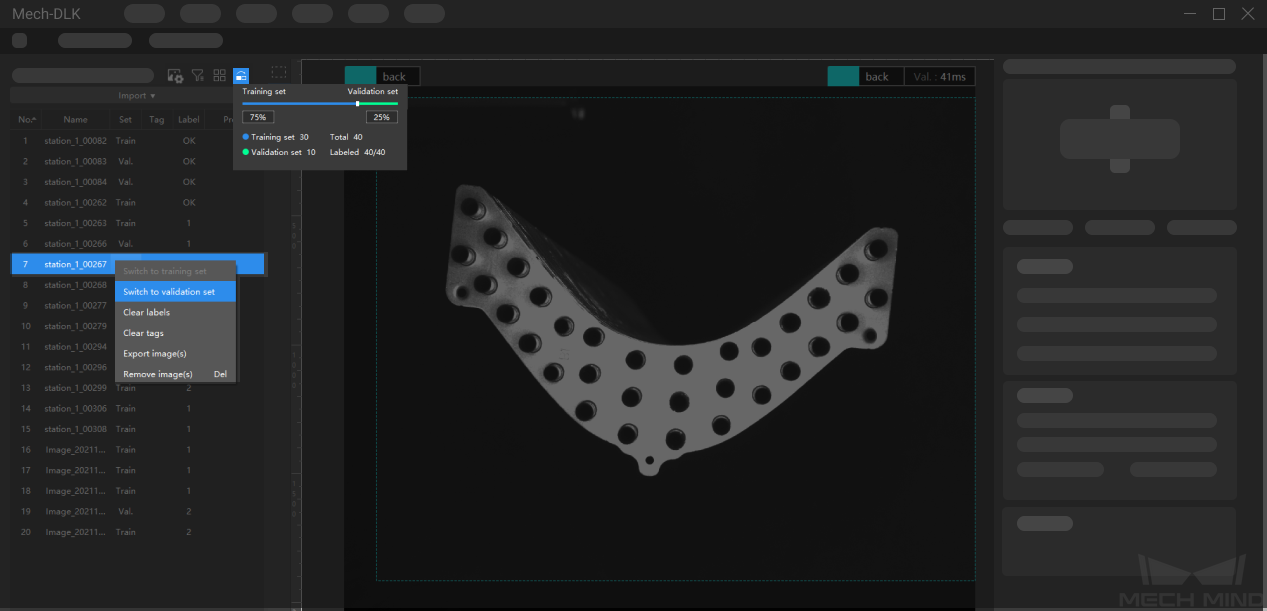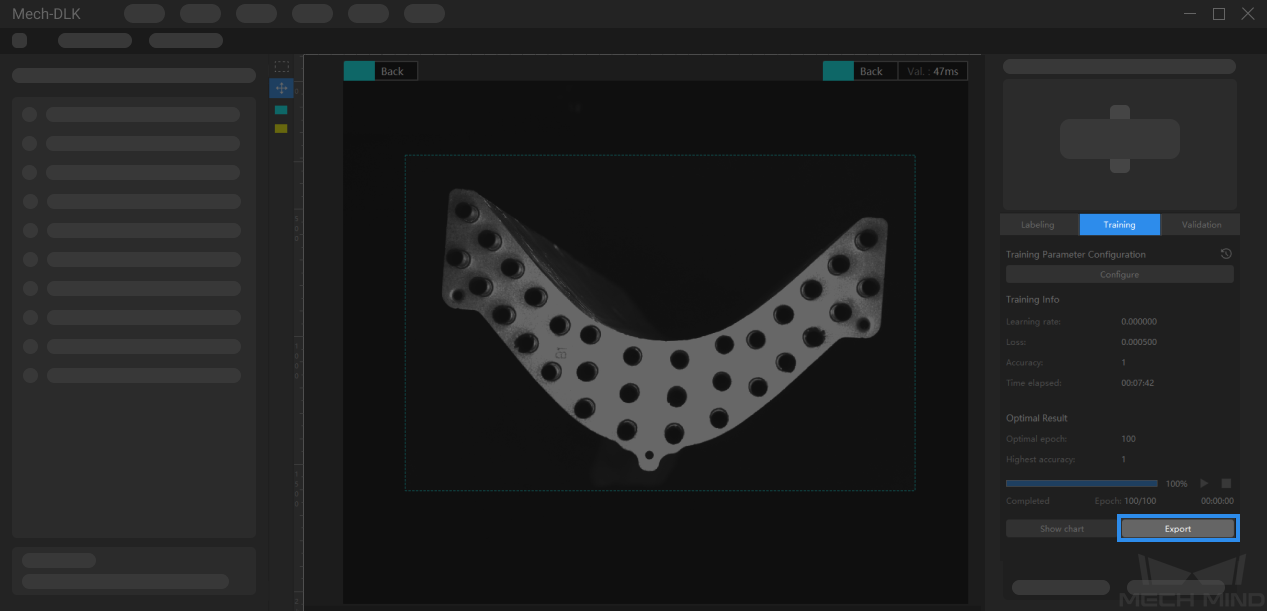Use the Classification Module¶
Please click here to download an image dataset of condensers. In this section, we will use a Classification module and train a model to distinguish between the front and back sides of the condensers.
Create a new project and add the classification module: Click on New Project in the interface, name the project, and select a directory to save the project. Click on
 in the upper right corner of the Modules panel and add the Classification module.
in the upper right corner of the Modules panel and add the Classification module.Import the image dataset of condensers: Unzip the downloaded dataset file. Click on the Import button in the upper left corner, select Folder, and import the image dataset.
Select an ROI: Click on the ROI Tool and adjust the frame to select the whole condenser as an ROI, and click on Apply to save the settings. Setting the ROI can avoid interferences from the background and reduce processing time.
Create labels: Click on the
 button in the Classes panel to create labels and name the labels according to the object names or their features. In this example, the labels are named Front and Back to distinguish between the front and back sides of the condenser.
button in the Classes panel to create labels and name the labels according to the object names or their features. In this example, the labels are named Front and Back to distinguish between the front and back sides of the condenser.Label images: Classify the images with corresponding labels. You can select multiple images and label them together. Please make sure that you have labeled the images accurately.
Split the dataset into the training set and validation set:
By default, 80% of the images in the dataset will be split into the training set and the rest 20% will be split into the validation set. Please make sure that both the training set and validation set include images in all different classes, which will guarantee that the model can learn all different features and validate the images of different classes properly.
If the default training set and validation set cannot meet this requirement, please click on
 and drag the slider to adjust the proportion.
and drag the slider to adjust the proportion.You can also right-click the individual image and switch it to the training/validation set manually.
Train the model: Keep the default training parameter settings and click on Train to start training the model.
Validate the model: After the training is completed, click on Validate to validate the model and check the results.
Export the model: Click on Export and select a directory to save the exported model (with file extension dlkpack). You can deploy the model according to actual needs.

